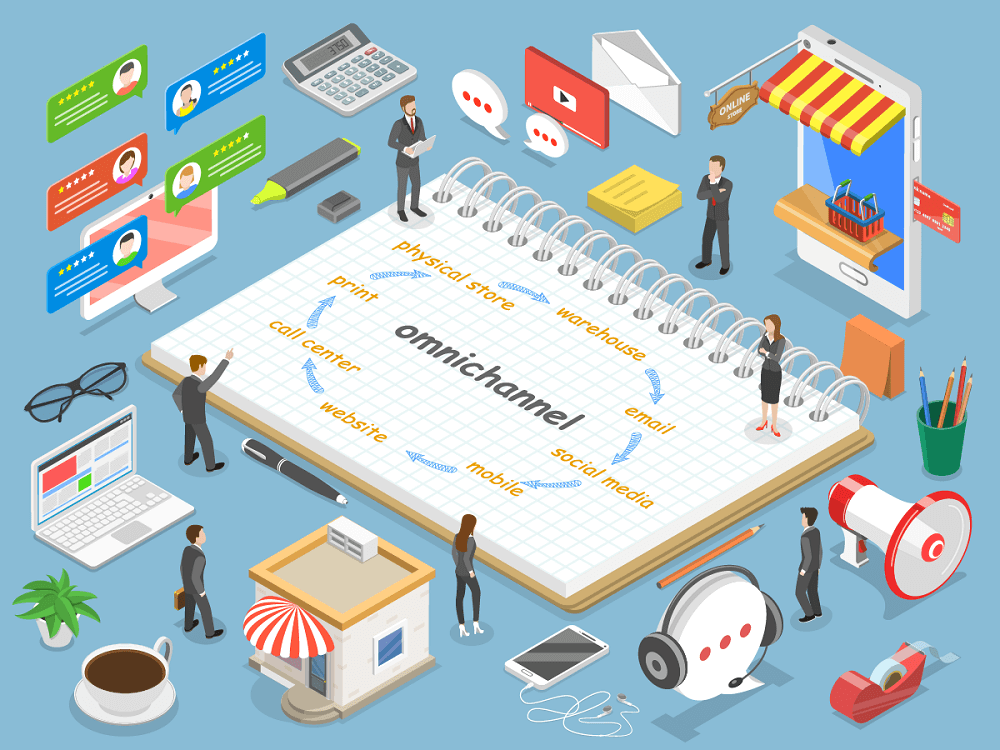
Retail Everywhere: Delivering a Unified Customer Experience with ERP
Consumer shopping patterns are quietly undergoing a dramatic shift as spending has moved from brick-and-mortar retail stores to online webstore purchases, to social selling on TikTok and other social media platforms. Instead of sales happening in dedicated stores, it now is retail everywhere.
While retailers have mastered web store sales at this point, social media selling still is a work in progress. But the need is clear; more than 11 percent of US households have purchased items through TikTok Shops in the past year, according to data from Earnest Analytics, and roughly 18.5 percent of all online purchases came through social media in 2023 based on data from research firm, Statistica.
Sales are thoroughly multi-channel at this point and not just a question of brick-and-mortar vs. webstore. Businesses are adjusting to this new world where there is commerce everywhere, and both retailers and consumer products firms are especially having to factor in a retail everywhere approach.
Why Retail Everywhere is Becoming the Norm
At first, online shopping was a novelty. Researching products online before purchasing them in a brick-and-mortar store lengthened the customer journey, but it still largely was about physical stores. Then Amazon and websites took over, and the pandemic permanently sealed the transition to a multi-channel world of both online and brick-and-mortar sales.
In the margins, though, the role of the brick-and-mortar store was changing as well. Instead of discovering products in retail stores, consumers began using physical stores for testing and inspecting products before buying them online.
Explore SAP's Customer Checkout extension for SAP S/4HANA Cloud
Savvy retailers have noticed the trend and shifted from fighting with websites for sales to embracing reality with concepts such as experiential shopping that use retail outlets as part of a larger omnichannel approach to sales. TikTok and social selling have become another avenue for this discovery and testing phase, especially for online-only retailers and consumer products brands that noticed Millennial and Gen Z shoppers live on social media above all else.
Social selling is an outgrowth of this evolution. With Millennial and Gen Z consumers spending most of their time on social, the social networks realized that they could eat the lunch of both brick-and-mortar and website sales by selling products directly through these platforms. Retailers have either reluctantly or enthusiastically embraced this new channel, but the trend is there.
The result of this evolution is a multi-channel world where it is retail everywhere, not just through retail shops.
Savvy Retailers Embrace an Omnichannel Approach
Retailers and consumer products businesses are embracing this multi-channel world, but the companies that are crushing it take an omnichannel approach instead of treating the various sales channels as different avenues for sale.
Sophisticated commerce everywhere strategy treats the various sales channels as all part of one omnichannel for capturing the sale, using the various channels as different touch points along the customer journey. Each channel might close the sale, but overall the various sales channels work together as an integrated whole that slowly moves the customer from awareness to purchase.
By accepting retail everywhere and adopting an omnichannel approach, retailers and consumer products firms are slowly meeting consumers where they are instead of fighting for the old sales experience that is dying and won’t come back.
Create a Unified Customer Experience with ERP
One challenge with an omnichannel approach to sales is creating a unified customer experience and linking brick-and-mortar outlets, websites, online marketplaces, and social selling. Retail everywhere requires a centralized backend that turns a multi-channel world into an omnichannel experience.
This is where an enterprise resource planning solution (ERP), like SAP S/4HANA Cloud Public Edition, comes into the picture.
ERP is an end-to-end backend solution that connects all parts of a company and all sales channels into a unified whole. All data flows into this single ERP system, turning discrete sales channels into pieces of a larger whole.
With ERP as the connective tissue and system of record, sales channels can work together as an omnichannel; each touch point can be informed by the customer interaction at one of the other touchpoints, driving a unified customer experience and better helping to close the sale.
This added visibility also allows retailers and consumer products businesses to better understand customer sentiment and changing patterns in both behavior and demand. The data collected through various touchpoints in real-time can be analyzed and piped through artificial intelligence engines for improved market insight, new product or sales ideas, and better campaign development.
Explore SAP S/4HANA Cloud Public Edition for Retail
Learn How ERP Can Help with Retail Everywhere
For more on how ERP enables an omnichannel sales approach and supports commerce everywhere, explore our ERP for retail solution offerings or contact one of our experienced ERP consultants at (801) 642-0123 or by writing us at info@nbs-us.com
